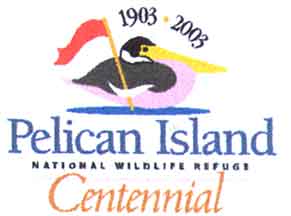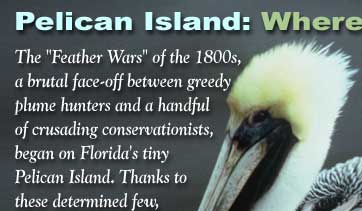 |
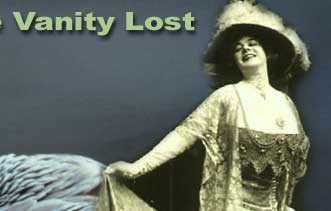 |
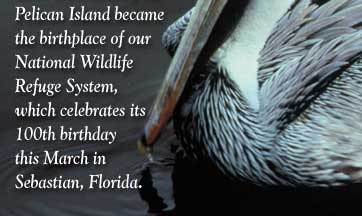 |
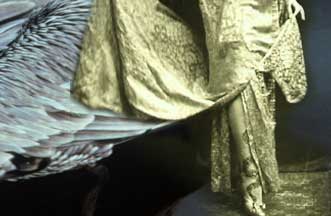 |
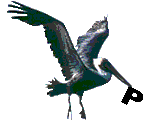
|
"A
wonderful bird
is the pelican, his bill can hold more than his belly can...." |
By William Reffalt, Fish and Wildlife Volunteer
elican Island is located in Florida's Indian River about 45 miles south of Cape Canaveral, in the south flowing lagoon called Indian River, a popular stretch of waterway along the inside shore of South Florida's barrier islands.
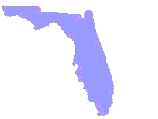 |
 |
|
Pelican
Island is in East Central Florida
|
With its distinctly triangular shape, the three sides of this 5.5 acres
island each measure roughly 700 feet, and was an ancient nursery for birds,
occupied for centuries if not millennia. Nineteenth Century visitors,
escaping rigorous northern winters,described the island as, "draped
in white, its trees seemingly covered with snow....", owing to the
downy young pelicans and other white birds perched atop the whitewashed
nests and mangroves. Chief among them was Dr. Henry Bryant of Boston,
an especially active ornithologist of the period, who discovered the merits
of Pelican Island during several visits to Florida in the 1850's.
"I found brown pelicans breeding in larger and larger numbers as
I went north from Key West, until I arrived at Indian River, where I found
the most extensive breeding-place that I visited; this was a small island,
called Pelican Island, about 20 miles north of Fort Capron.
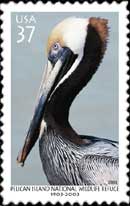 |
|
This
commemorative stamp celebrates Pelican Island National Wildlife
Refuge's
centennial
|
The nests here were placed in the tops of mangrove-trees, which were about the size and shape of large apple trees. Breeding in company with the Pelican were thousands of Herons, Peale's Egret, the Rufous Egret, Little White Egret and Roseate Spoonbills; and immense numbers of Man-of-War Birds and White Ibises were congregated upon the island, and probably bred there at a later period than my visit."
Meanwhile, a booming bird markets to the north, coupled with the universal feeling that all of America's natural resources were there simply to benefited man, caused native non-gamebird populations worldwide to be systematically devastated by gunners paid by middlemen merchants making a living selling feathers, birds, and parts, mostly to New York markets.
Women's fashions of the time generated huge demands for birds and their parts and caused particular destruction to those nesting in colonies. That, and making fans, ink quills, decorative mats, wall hangings, and footwear of the bird parts, had created markets in New York, Baltimore, Philadelphia, London and Paris by the 1850s. Quantitative records, spotty and often not comparable, record several hundred thousand birds sold at weekly auctions.
|
March
14, 2003
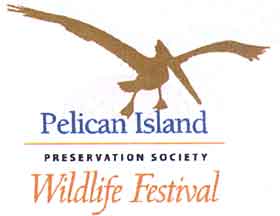 March 15 & 16, 2003 Riverview Park, Sebastian, Florida
|
|
"As
we passed we saw a party of northern tourists at the island, shooting
down the harmless birds by the scores through mere wantonness..."
|
Feathers and parts from peacocks, rheas, ostriches, pheasants and birds of paradise came from sources in Africa, Asia, Indonesia and Europe. Parts from herons, kingfishers, jays, magpies, and others were supplied from South and Central America, and Florida. Gulls, terns and many shorebird species were obtained from northeastern Atlantic island colonies extending from Virginia to Labrador. Many highly sought species, such as sea swallows (terns) were locally extirpated rapidly. Leading ornithologists feared a new series of extinctions loomed on the horizon.
The situation looked unstoppable as the precipitant demises of the "endlessly abundant" Carolina parakeets, passenger pigeons, and great auks, or the American bison. Although states had developed increasingly complex game laws and in some instances had hired wardens to enforce those laws, those advocating protection, such as the American Ornithologist's Union (AOU), for the over 80 percent of North America's bird species unprotected by game laws faced an enormous, daunting task.
Dr. Bryant noted that roseate spoonbills were in such numbers at Pelican Island that one person killed 60 in a day. Following Bryant's alarming report, others appeared in the major periodicals of the day. In 1871, Mr. S. C. Clarke reported in American Naturalist, "A party of hunters visited Pelican Island this year in March, and found it covered with eggs and young birds, which were being fed by the old ones with fish. Some of these were shot, and most of the others driven away, when suddenly the island was invaded by multitudes of the Fish Crow...which began to devour both the eggs and the callow young.... The hunters then turned their guns upon the crows and slaughtered them in heaps, before they would abandon their prey."
Dr. James Henshall, a physician who took patients to Florida for its climate and the recuperative powers of outdoor recreation, published Camping and Cruising in Florida in 1884. Under Pelican Island -- Slaughter of the Innocents he wrote, "As we passed we saw a party of northern tourists at the island, shooting down the harmless birds by the scores through mere wantonness. As volley after volley came booming over the water, we felt quite disgusted at the useless slaughter, and bore away as soon as possible and entered the narrows."
Scientists and naturalists regularly visited the island for specimens, usually attempting to take a "series" of plumages (meaning 18 or more pelicans for each collector), and "sets" of eggs. One oologist (bird-egg specialist) admitted taking 125 sets after halting, and discarding, his guide's collection made by filling pails indiscriminately with eggs, without reference to sets.
 |
|
FWS
personnel banding a Brown Pelican.
|
More published reports exist, while the unrecorded attrition caused by
passengers and crews of the regular steamboats obviously diminished the
birds even more. Whistles were often blown as the steamboats entered or
exited the narrows and the alarmed birds immediately took to the air,
circling outward from the island. That placed them within gun range, when
tourists and crew blasted away merely for the "fun of killing."
The AOU Bird Protection Committee began its work in 1884. By 1886, that Committee developed a "Model Law" based on defining game birds, and then protecting all other taxonomic Orders and some Families. The approach eliminated confusion, resistance from sporting interests and state game commissions, and greatly improved chances of passage by state legislatures. It also could
accommodate differing state-by-state opinions about several species. Thus, mourning doves, blackbirds, raptors and a handful of other species were left unprotected in some states while protected in most.
The Committee issued special bulletins, made lanternslide presentations, gave newspaper interviews, and developed special museum exhibits describing the destruction of bird rookeries, thus pioneering techniques to gain public support to stop the slaughter. During the first half of the 1890s however, Committee actions slowed, its members were discouraged and weary. Florida's Pelican Island, however, remained beyond the Committee's horizon.
|
FLORIDA'S FEDERALLY PROTECED WILDLIFE REFUGES |
|||
| Refuge
Pelican Island Passage Key Indian Key Mosquito Inlet Tortugas Keys Key West Pine Island Palma Sola Matlacha Pass Island Bay |
Date
Established |
Species
Native Birds Native Birds Native Birds Native Birds Native Birds Native Birds Native Birds Native Birds Native Birds Native Birds |
Status NWR NWR No Fed. Land* No Fed. Land Natl. Park NWR NWR No Fed. Land NWR NWR |
| *Note: No Fed. Land may indicate valid state/private claims, area eroded away completely, or reservoirs transferred to water users. | |||
In November 1895, an insurance agent in New York City named William Dutcher assumed the reins of AOU leadership, and infused the other members with new enthusiasm and commitment, the epitomize of volunteerism. Dutcher had a passion, fostered by self-education and his friends, for natural history, especially life histories and protection of birds. In spite of considerable strain on his business, Dutcher was to foster the bird protection cause on many fronts - legislative, administrative, law enforcement, and by dissemination of popular and scientific information. He initiated, lobbied for, and gained passage of laws protecting non-game birds in more than 40 States, receiving no remuneration for his work on behalf of birds.
In 1896 the Supreme Court issued an important decision, giving impetus for state legislation and claims of primacy in fish and game matters. The "Lacey Bill" initiated on July 1, 1897, followed a day later by the "Teller Bill," and, in 1898, the "Hoar Bill." invoked the Commerce Clause to provide federal authority over wildlife, but all failed to pass over several sessions of Congress.
The Lacey Act finally became law on May 25, 1900, modified substantially
from its original version and ultimately containing elements from the
Hoar and Teller bills. It specifically enlarged the Agriculture Department's
powers, "...to include the preservation, distribution, introduction,
and restoration of game birds and other wild birds. The Secretary of Agriculture
is hereby authorized to adopt such measures as may be necessary to carry
out the provisions of this act...."
 |
|
Author
and bird curator Frank Chapman
|
Pelican Island's protection came from people with passion and farthinking recognition of this special place and its important wildlife values, and their bold commitment to conserving those values in perpetuity. Among these handful of people was author and bird curator at New York's American Museum of Natural History, founder of Bird-Lore (the Audubon Societies' magazine), and AOU member, Frank Chapman, visited Pelican Island during nesting seasons in 1898. By then the thousands of herons, egrets, roseate spoonbills, man-o-war birds, and white ibises were gone, and the pelicans severely reduced. Chapman's studies and keen interest in the island and the pelicans prevented their extirpation on that tiny, but obviously significant, native bird habitat.
Theodore Palmer was an Assistant Chief in the Division of Biological Survey, U.S. Department of Agriculture (DOA), charged with implementing the Lacey Act of 1900 to protect birds. Palmer, a key member of the AOU Committee on the Protection of North American Birds also became involved in the resurgent Audubon Societies, a movement committed to halting the wanton slaughter of innocent bird life for thriving markets.
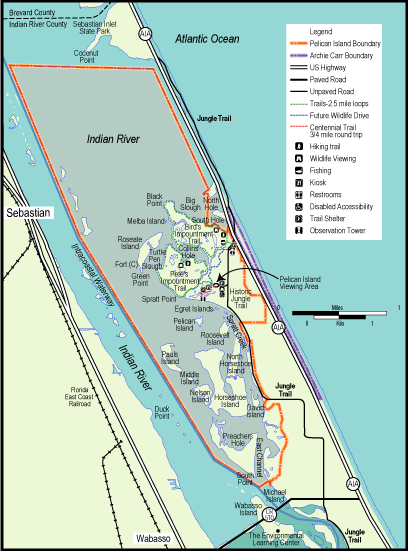 By
early 1900, bird dealers' demands for gull and tern skins, feathers and
parts far exceeded the supply, and that encouraged new assaults on rookeries.
Abbott Thayer, an artist and avid bird protectionist, appealed
to the public and his friends for donations to employ guards for protecting
bird colonies during the breeding season. His efforts were successful
and, by previous agreement, AOU committee chair William Dutcher used
the money to hire wardens. The "Thayer Fund," enacted June 4,
1901, helped the bird protection cause enter a new, more aggressive phase.
But those "nurseries" were still being systematically devastated
by gunners.
By
early 1900, bird dealers' demands for gull and tern skins, feathers and
parts far exceeded the supply, and that encouraged new assaults on rookeries.
Abbott Thayer, an artist and avid bird protectionist, appealed
to the public and his friends for donations to employ guards for protecting
bird colonies during the breeding season. His efforts were successful
and, by previous agreement, AOU committee chair William Dutcher used
the money to hire wardens. The "Thayer Fund," enacted June 4,
1901, helped the bird protection cause enter a new, more aggressive phase.
But those "nurseries" were still being systematically devastated
by gunners.
The first warden on pelican Island was a German immigrant named Paul Kroegel, who was paid $50 by the Committee to protect the birds during the nesting season. But he soon found out that the unusually extended breeding season at Pelican Island required his devoted attention for six months of the year or more.
It also became discouragingly obvious to these committed men that the island's land status created a very difficult enforcement situation. At that time Florida appointed county wardens, usually selected more for their political connections than for devotion to the law. The authority granted by the AOU Committee worked well under private ownership. It insured trespass control and enhanced a court's sense of justice in convicting those also violating state law by killing innocent, often beneficial, birds found on private property. With Pelican Island's ownership in question, however, trespass was a moot issue in the courts, and the bird protection law had no provision against mere harassment.
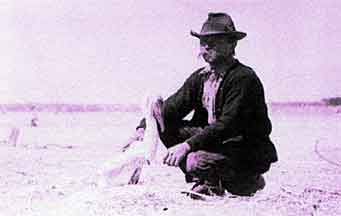 |
|
America's
first refuge warden, Paul Kroegel.
|
Red tape, informational demands, and uncertainty faced AOU Committee Chairman William Dutcher as pressed his friend and colleague Theodore Palmer in Washington, DC about efforts to purchase Pelican Island and protect its bird colony, "Will it not be possible for you to go to Interior, in order to hurry up the Pelican Island matter?" Dutcher felt deep frustration. Palmer suddenly opened a new possibility, suggesting that, if Dutcher agreed, he should address a letter to the Secretary of Agriculture requesting that Pelican Island be made a government reservation.
Appraised of the new alternative, Dutcher worked over the weekend drafting a request to the Secretary of Agriculture. His request, received in DC on February 27th, was forwarded the
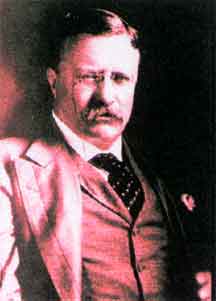 |
|
President
Theodore Roosevelt, who is credited with a legacy of conservation.
|
same day to the Interior Department. The Executive Order was signed two weeks later. In that brief interval the Secretary of Agriculture had to approve and sign the request, the Secretary of the Interior had to be briefed and approve the decision, and, following development of documents for the White House, the President had to be briefed and decide favorably. Given today's norm for handling public requests, those two weeks constitute an unbeatable speed record.
President Theodore Roosevelt signed the Executive Order on Saturday, March 14, 1903 withdrawing Pelican Island as America's first National Bird Reservation. Notable in his action was the absence of a specific statute authorizing him to create such a reservation for birds. Roosevelt used "implied Presidential powers" recognized by the courts, but of uncertain merit in the Congress.
Roosevelt well knew of his initial signature's significance, and the importance of his many subsequent orders enlarging the new series of reservations to preserve wild birds and other animals in the public interest. Unquestionably, Theodore Roosevelt earned and deserves recognition as the "Father of America's National Wildlife Refuge System."
Today, America's National Wildlife Refuge System is unsurpassed in size and scope anywhere in the world, and Pelican Island continues to be the preferred nesting grounds for hundreds of pelicans and hundreds more birds of other species notable conservation area ready to begin another 100 years of service to wildlife and the public.
photos provided by the U.S. Fish & Wildlife Service
and the National Wildlife Refuge System

